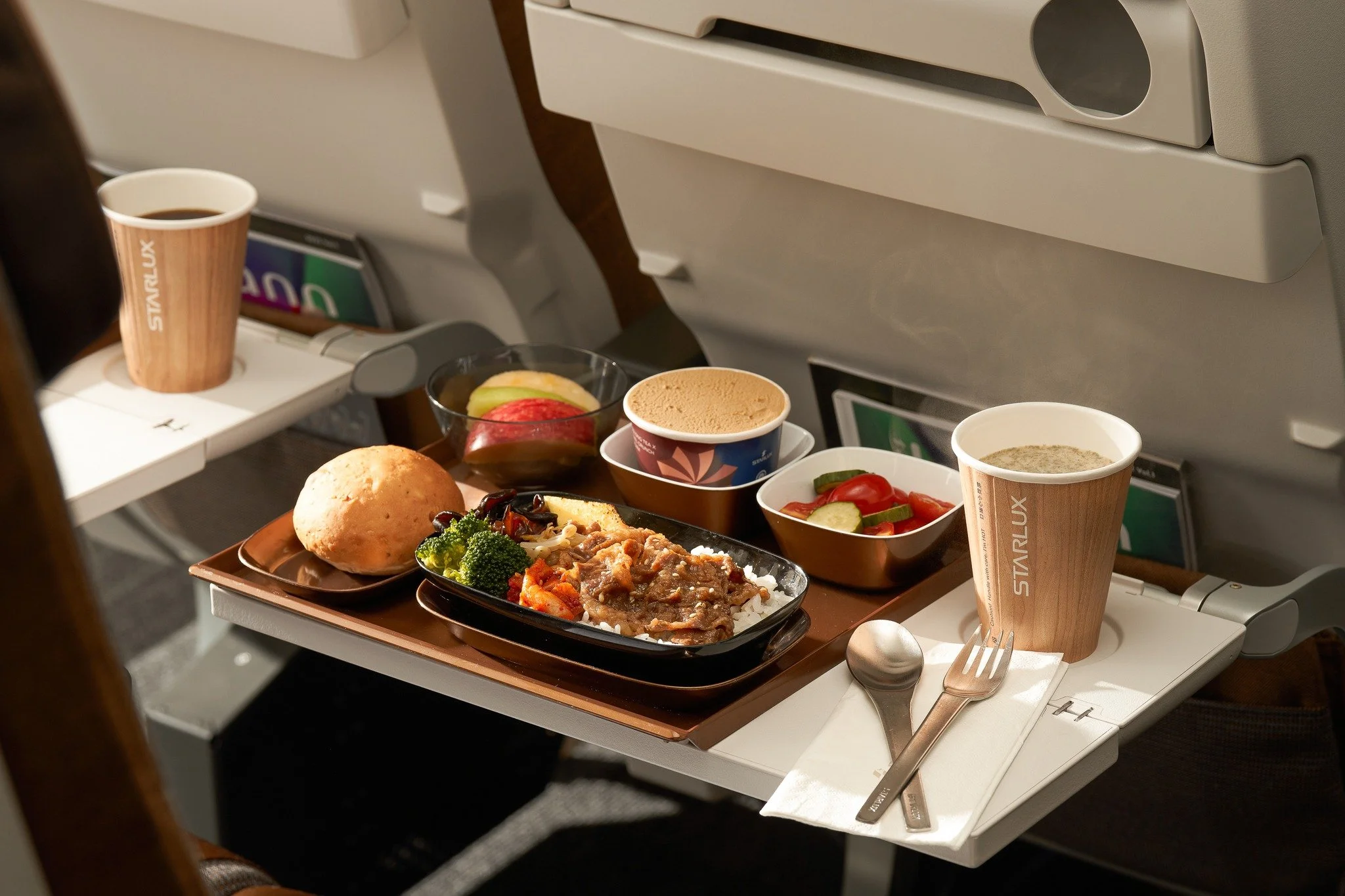FROM BIODEGRADABLE PRODUCTS
TO VISUALIZING CARBON IMPACT
I partnered with Minima, a biodegradable packaging company in Taiwan, to design a digital experience for STARLUX passengers. The goal? Show people the real CO₂ impact of their in-flight choices, because sustainability means nothing if it's invisible.
DESIGN APPROACH
I started with a simple question: how do you make someone care about a plastic fork when they're 30,000 feet in the air?
Most passengers have no clue their meal tray choices affect the planet. So I dug into the entire lifecycle—how Minima's materials get made, used, and composted, plus how much CO₂ they actually save versus regular plastic. I also spent time understanding passenger behavior and what makes people tune out when they hear "sustainability."
The challenge was connecting abstract carbon savings to something passengers could feel good about, while creating value for both STARLUX and the environment.
Project Type: Customer-Facing Digital Experience
Role: Research, UX Strategy, Data Visualization, UI Design
Tools: Figma
Timeline: 4 weeks
PROBLEM
Here's the thing about airline sustainability: it's mostly theater. Passengers hear vague corporate promises about being "greener," but they never see what that actually means for their specific flight.
The next generation of travelers isn't buying it anymore. They want proof, not pledges. They want to see their personal impact, not just read about company-wide initiatives that might happen someday.
A PARTNERSHIP
Minima's certified compostable products help airlines cut their environmental impact while preparing for a future where carbon tracking isn't optional, it's expected. But without visibility into that impact, it's just expensive utensils that look the same as plastic ones.
BUT WHAT EXACTLY ARE THE IMPACTS?
I needed to answer this question with real numbers, not feel-good generalities.
SINGLE FLIGHT CO₂ EMISSIONS BREAKDOWN
Individual items used on one long-haul flight (A350-900)
The impact: Switching to compostables = 65% CO₂ reduction
Replacing plastic items with Minima's products on a single 12-hour flight saves over 1,700 kg of CO₂. That's like taking a car off the road for 4,200 miles just from changing forks, cups, and meal containers.
TURNING CARBON DATA INTO PASSENGER REWARDS
I built this feature on top of STARLUX's existing mileage dashboard. The Sustainable Flyer Program gives passengers bonus miles based on the actual CO₂ they help save by flying STARLUX and using biodegradable products.
Instead of abstract environmental messaging, passengers see their personal impact in real numbers, and get rewarded for making choices that matter.
THE RESULT
This isn't just about making STARLUX look good (though it does). It's about making sustainability personal and visible.
Passengers finally see what their choices actually accomplish, STARLUX gets a genuine differentiator with eco-conscious travelers, and the planet gets measurable CO₂ reductions instead of empty promises.








